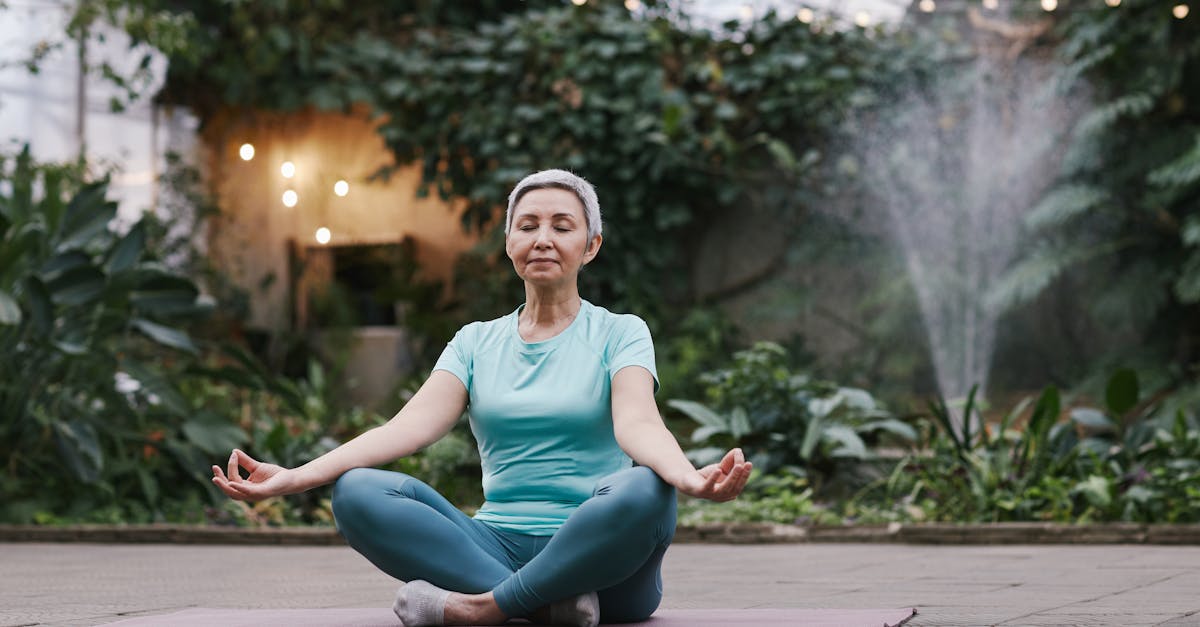|
In Short, combating dizziness involves addressing the link between bad posture and feelings of unsteadiness. This approach supports individuals in achieving better alignment to enhance their overall well-being. Benefits include reduced incidences of dizziness, improved muscle tension relief, and enhanced daily performance. Utilizing simple posture adjustment techniques, individuals can effectively alleviate symptoms while fostering lasting improvements in health. This method is easy to implement and promotes a holistic understanding of how posture influences daily activities. |
Combatting dizziness begins with an awareness of posture and body alignment during daily activities. Poor posture, such as a forward head position or slouching, can lead to neck strain, tension headaches, and feelings of unsteadiness. Implementing simple adjustments—like using an ergonomic chair, maintaining proper alignment while sitting or sleeping, and taking regular breaks to stretch—can enhance balance and reduce dizziness. Staying mindful of overall alignment and performing exercises that promote strength and flexibility are essential steps towards achieving better health and eliminating discomfort.

Experience Balance and Wellness at Pulse Align
At Pulse Align, we offer a gentle and innovative approach to help your body restore its natural posture and overall balance through imperceptible pulses. This non-invasive method effectively promotes muscle tone symmetry, which can often lead to reduced tension in muscles and joints. By prioritizing the body’s inherent ability to recalibrate itself, our service encourages an environment of well-being that is ideally suited for every member of the family.
Natural Recalibration for Comfortable Living
Instead of focusing on discomfort directly, Pulse Align’s method supports your body’s natural processes, facilitating a holistic journey toward improved posture and comfort. Many clients report enhancements in their overall sense of well-being and posture after engaging with our services. By aligning the body’s natural movements, we aid in enhancing daily activities and fostering a more balanced lifestyle.
A Personalized Approach to Wellness
We take pride in our personalized approach at Pulse Align, as evident through the heartfelt testimonials that our clients share. Many have experienced noticeable improvements in neck and back tension, postural alignment, and overall well-being. Our friendly and welcoming environment empowers clients to embark on their wellness journeys with confidence and comfort.
Explore Pulse Align Services Today
We invite you to learn more about our innovative services and to find a nearby Pulse Align clinic in cities such as La Prairie, Mont-Royal, and Terrebonne. Book a consultation for yourself or your family members to discover how our gentle, non-invasive approach can complement your wellness journey. Remember, Pulse Align works alongside your existing healthcare services, enhancing the natural processes that lead to balance and comfort.
Medical Disclaimer
The information and advice provided on this site do not replace the advice, diagnosis, or treatment of a healthcare professional. Clients should remain under the supervision of their healthcare team for any medical conditions.
- Stay Aware: Regularly check your body alignment during daily activities.
- Modify Sleeping Position: Use pillows to maintain spinal alignment at night.
- Adjust Chair Height: Ensure your feet rest flat on the ground while sitting.
- Engage Core Muscles: Strengthen your core to support better posture.
- Take Breaks: Stand, stretch, and move to promote circulation regularly.
- Practice Mindfulness: Use meditation to enhance body awareness and posture.
- Incorporate Stretching: Daily stretches can alleviate tension and improve flexibility.
- Ergonomic Setup: Organize your workspace for optimal neck and back positioning.
- Use Anti-Fatigue Mats: For standing desks, they’re essential for muscle comfort.
- Seek Professional Guidance: Consult specialists for personalized posture corrections.

Dizziness is often linked to poor posture and improper body alignment. By understanding the impact of our positioning throughout the day, individuals can take proactive steps to combat dizziness through posture correction. This guide presents valuable tips to improve alignment in various situations—whether sitting, sleeping, or lounging—ultimately contributing to overall well-being and reducing the frequency of dizzy spells.
Understanding the Importance of Posture
Posture plays a critical role in maintaining bodily harmony. Good posture helps distribute the body’s weight evenly, reduces strain on muscles and joints, and supports optimal breathing and circulation. Conversely, bad posture, characterized by slouching or forward head position, can lead to tension in the neck and back, exacerbating feelings of dizziness. Recognizing the significance of maintaining good posture is the first step toward enhancing balance and reducing the risk of dizziness.
Adjusting Your Sitting Position
Most individuals spend a significant amount of time sitting—either at a desk or while relaxing at home. To improve postural alignment while sitting, consider the following tips:
- Sit Upright: Keep your back straight and ensure that your shoulders are relaxed. Your ears should be aligned with your shoulders.
- Choose Ergonomic Furniture: Use chairs that support the natural curve of your spine. Adjust seat height so your feet rest flat on the floor.
- Frequent Movement: Take short breaks to stand, stretch, and realign your body. This action helps stimulate blood flow and reduces muscle fatigue.
Optimizing Sleeping Positions
How you sleep can significantly impact your posture and feelings of dizziness. To improve your sleeping position, keep these recommendations in mind:
- Use Supportive Pillows: A pillow should maintain the alignment of your neck and spine. Side sleepers may benefit from a firmer pillow, while back sleepers might prefer a thinner one.
- Avoid Stomach Sleeping: This position can twist the neck, increasing tension and discomfort. Instead, consider sleeping on your back or side.
- Positioning Your Body: If you sleep on your side, ensure your knees are slightly bent to relieve pressure on your lower back.
Practicing Mindful Lounging
Lounging and relaxing can also lead to poor postural habits. To ensure that you maintain proper alignment while lounging:
- Support Your Back: Use cushions or pillows to support your lower back when lounging on a couch.
- Adjust Screen Heights: When watching TV or using a computer, ensure screens are at eye level to prevent neck strain.
- Be Mindful of Movement: Avoid sinking too deeply into furniture, which can contribute to slouching.
Incorporating Movement and Stretching
Regular movement and stretching are essential for maintaining good posture and reducing feelings of dizziness. Here are a few exercises to incorporate into your daily routine:
- Neck Rolls: Gently roll your neck to relieve tension.
- Shoulder Shrugs: Lift your shoulders towards your ears, hold briefly, and then release them down.
- Core Strengthening: Engage in exercises that build core strength to support your spine effectively.
Staying Aware of Posture
Incorporating awareness into your daily activities is key to improving your posture. Practice regular posture checks throughout the day, especially during tasks such as working at a computer, cooking, or cleaning. Being conscious of your body’s alignment can help mitigate tension and contribute to an overall sense of well-being.
Enhancing your daily habits and adopting a proactive approach to posture correction can significantly reduce dizziness and improve overall health. By focusing on holistic practices in line with the principles of Pulse Align, individuals can promote neuromuscular health, achieve a sense of balance, and realign their nervous system—ultimately positioning themselves for a healthier life.
| Postural Issue | Adjustment Recommendation |
|---|---|
| Poor Sleeping Position | Use a supportive pillow to maintain head and neck alignment, enhancing overall comfort. |
| Forward Head Posture | Practice keeping your chin tucked and shoulders back during daily activities for better alignment. |
| Slouching While Sitting | Engage in using ergonomic furniture and remind yourself to sit up straight to alleviate tension. |
| Long Periods of Standing | Shift your weight between legs and use supportive surfaces to foster better gravity alignment. |
| Device Usage Position | Hold screens at eye level to avoid neck strain, promoting a more natural posture. |
| Incorrect Alignments During Activities | Focus on regular posture checks throughout the day to create a mindful awareness of your body. |
| Tension During Relaxation | Utilize supportive cushions while lounging to maintain a comfortable and aligned position. |
| Unbalanced Movement Patterns | Incorporate periodic stretching and realignment activities to restore natural body balance. |
| Improper Breathing Techniques | Practice deep breathing exercises to enhance oxygen flow and relieve muscle tension. |
| Awareness of Stress Factors | Implement mindfulness practices to support emotional and physical balance for improved posture. |

Client Testimonials: Transforming Wellness Through Improved Posture
“I have been struggling with frequent dizziness for years, and nothing seemed to work. Since I started at Pulse Align, I’ve noticed significant improvements. Their unique approach has helped me tap into my body’s natural ability to recalibrate, leading to less tension and a more balanced feeling on a daily basis.” – A satisfied client from Châteauguay
“Living in Mont-Royal, I’ve always sought holistic options for my health issues. Pulse Align’s method for improving posture and alignment has been a game changer for me. I feel lighter, more aligned, and my dizziness has drastically reduced since I implemented their suggested exercises and mindfulness techniques.” – A happy client from Mont-Royal
“In Saint-Jérôme, I found Pulse Align and it has truly transformed my wellness journey. The unobtrusive pulses helped me regain my balance in life and reduce my discomfort from poor posture. It’s amazing how reconnecting with my body’s natural rhythms has eased my feelings of dizziness.” – Grateful client from Saint-Jérôme
“As a resident of Deux-Montagnes, I appreciate how Pulse Align’s professional team collaborates with my healthcare providers. Since my sessions, not only has my posture improved, but my overall wellness has seen a noticeable upswing. I feel empowered and capable of managing my health.” – An advocate for holistic recovery from Deux-Montagnes
“I can’t express how much Pulse Align has positively influenced my life in Les Escoumins. My issues with dizziness have lessened significantly, and the warm, supportive environment made me feel right at home. Their approach encourages the body to heal and restore itself naturally, which I truly appreciate.” – A delighted client from Les Escoumins
“Pulse Align has been an eye-opener for me in Sainte-Marie. The focus on posture and positioning has redefined the way I think about my overall health. I no longer feel like I’m battling dizziness but instead have joined a wellness journey that feels genuinely transformative.” – A motivated client from Sainte-Marie
Whether you’re located in Chicoutimi, Terrebonne, or La Prairie, discover how Pulse Align can guide you towards better posture and improved well-being. Their compassionate team is dedicated to helping you reclaim your health naturally.
Learn more about how to improve your wellness at our clinics by visiting Our Clinics. Pulse Align is committed to working alongside your healthcare team, ensuring you and your family thrive on your wellness journey.
Dizziness is a common complaint that can significantly impact daily life and overall well-being. Poor posture is often a contributing factor, making it essential to understand the connection between body alignment and feelings of dizziness. Many individuals fail to realize how their physical posture, especially while sitting, standing, or even sleeping, can influence their balance and stability. By addressing posture and making simple adjustments, individuals can alleviate discomfort and reduce dizziness symptoms.
One expert in this field is Dr. Sylvain Desforges, who has dedicated his career to healthcare innovation with a specialization in chronic pain management. As the founding president of TAGMED clinics and the ACMA association, Dr. Desforges combines expertise in osteopathy, naturopathy, and manual medicine with advanced treatment methodologies. His primary mission is to provide evidence-based care that recognizes the importance of posture and body alignment in optimizing health and well-being.
Dr. Desforges emphasizes that poor posture can lead to various health issues, including dizziness and vertigo. For instance, maintaining a forward head posture—often seen with excessive screen time—can create tension in the neck muscles and lead to sensations of spinning or instability. This misalignment affects blood flow and nerve function, contributing to feelings of disorientation. Therefore, improving body positioning is crucial in combatting dizziness.
Individuals can start by being mindful of their posture throughout the day. Simple practices such as ensuring the chair allows for proper lumbar support, keeping feet flat on the ground, and aligning the screen at eye level can help. Dr. Desforges advocates for regular posture checks, encouraging people to assess their alignment while they work or relax. Such awareness plays a significant role in preventing poor posture from becoming an ingrained habit.
Another effective strategy he recommends is to pay attention to sleeping positions, which can significantly impact spinal alignment. Using a supportive pillow that maintains neck and spine alignment, choosing a neutral position, and avoiding excessive bending can create a restful sleep environment which can help mitigate morning feelings of dizziness. By evaluating how you sleep and adjusting as necessary, you can make a notable difference in overall comfort and well-being.
Stretching and strength-building exercises targeting the core and back muscles are also critical components of improving posture. Dry needling, physical therapy, and yoga can serve as excellent practices for ensuring that the body remains flexible and strong, which can directly affect balance. Dr. Desforges frequently promotes these methods to empower patients on their wellness journeys toward a more aligned and stable state.
Dizziness is not simply a nuisance; it can signify deeper issues related to the body’s posture and alignment. Dr. Desforges works diligently to educate his patients about the implications of poor posture and provides practical solutions tailored to individual needs. His holistic approach considers multiple dimensions of health, facilitating a comprehensive plan to enhance the quality of life.
In conclusion, understanding the vital connection between posture and dizziness is crucial for anyone looking to enhance overall well-being. By implementing strategies that address alignment and reviewing daily habits, individuals can combat dizziness effectively and reclaim their health. Dr. Desforges’ expertise in osteopathy and innovative methodologies at TAGMED clinics provides a solid foundation for those seeking to improve their physical stability through thoughtful consideration of their posture.
Neurovertebral Decompression Technology by TAGMED
Mechanism of Action
The neurovertebral decompression technology offered by TAGMED operates by applying controlled and progressive traction forces to the spinal column. This innovative method is designed to create an increased space between the vertebrae, which is essential for relieving pressure on intervertebral discs and nerve roots. As this space increases, it facilitates better fluid circulation in the targeted region, which is crucial for nourishing spinal structures. This enhanced circulation not only mitigates inflammation but also aids in pain relief, creating an optimal environment for recovery.
Specific Benefits
This non-invasive method effectively addresses chronic pain and related symptoms associated with conditions such as disc herniation, disc bulging, and moderate to severe foraminal or spinal stenosis. By significantly reducing the pressure exerted on nerve structures, the neurovertebral decompression technology optimizes fluid circulation around the discs, which can lead to faster recovery rates and improved quality of life across a broad spectrum of patients. Many individuals report a marked reduction in discomfort, enabling them to engage more fully in their daily activities.
Comparison with Other Treatments
When comparing TAGMED’s neurovertebral decompression technology with other commonly used therapeutic approaches, such as analgesics, corticosteroid injections, surgery, or traditional physiotherapy, its unique advantages become clear. Unlike surgical interventions that carry significant risks and often require lengthy recovery times, this technique is non-invasive, drastically minimizing the risk profile. Patients frequently experience faster recuperation times, reducing their reliance on medications and minimizing potential side effects associated with pharmacological treatments. In this context, neurovertebral decompression stands out as a safe and effective alternative that promotes long-lasting health improvements.
Case Studies or Testimonials
Numerous patient testimonials highlight the effectiveness of TAGMED’s neurovertebral decompression. For instance, patients often report lasting reductions in their chronic pain levels, allowing them to resume daily activities more quickly. Many individuals express gratitude for the diminished discomfort and appreciate how this approach has enabled them to decrease their dependence on medication. These accounts not only emphasize significant improvements in pain management but also illustrate a shift towards a sustainable, healthy approach to pain relief.
Maintaining a proper posture is essential in combating dizziness, an often-overlooked symptom stemming from poor alignment. The body’s intricate musculoskeletal system relies on harmonious positioning to ensure stability and balance, and a misalignment can lead to the uncomfortable sensations of disorientation and vertigo. Recognizing the link between posture and dizziness sets the stage for effective strategies aimed at alleviating these symptoms.
Practical adjustments in daily life can make a significant difference. Being conscious of one’s head positioning and striving to avoid common pitfalls, such as forward head posture, can help alleviate undue strain on the neck muscles. Additionally, correcting sleeping positions is crucial; choosing supportive pillows and maintaining the natural curve of the spine can result in lasting improvements in alignment. This also highlights how integral our sleeping habits are to overall well-being.
Incorporating ergonomic setups in workspaces and being mindful while sitting can also contribute to reducing symptoms of dizziness. Regular breaks to stretch and realign can significantly enhance blood circulation and reduce muscle tension. Furthermore, engaging in postural exercises that strengthen back and neck muscles will lead to a more resilient body, better equipped to handle the physical demands of daily life.
Ultimately, enhancing posture requires a combination of awareness, education, and practice. By acknowledging the impact of bad posture and taking proactive measures, individuals can foster a more balanced and comfortable existence. The journey to improved posture will not only diminish dizziness but will also elevate overall health and quality of life, spilling over into various aspects of one’s daily routine.

Do you suffer from a chronic condition that responds little or not at all to conservative treatments?
In seeking alternatives to traditional approaches, many individuals explore ways to enhance their well-being while addressing discomfort caused by poor posture and positioning. Pulse Align offers a non-invasive, innovative method designed to help restore the body’s natural balance and posture through gentle, imperceptible pulses. This approach can lead to a reduction in muscle and joint tension, enabling clients to experience relief and a sense of stability in their everyday lives.
Rather than focusing on discomfort or specific conditions, Pulse Align emphasizes the body’s intrinsic ability to recalibrate itself naturally. By supporting muscle tone symmetry, this alternative method can yield amazing improvements in overall comfort and posture. Clients often report feeling more aligned and centered, which contributes positively to their daily activities and experiences.
The personalized nature of Pulse Align is a cornerstone of its philosophy. Clients have shared heartfelt testimonials highlighting the notable improvements they’ve experienced, including enhanced comfort levels and reduced tension in areas such as the neck and back. Many express appreciation for how services at Pulse Align have bolstered their overall wellness, allowing them to navigate their lives with greater ease.
If you’re keen to explore how Pulse Align can assist you and your family, we invite you to visit our website. You can discover more about our innovative services, find nearby locations in cities like La Prairie, Mont-Royal, Terrebonne, and book a consultation for yourself or your loved ones. Remember, Pulse Align complements your wellness journey and enhances your existing healthcare services. Our safe, non-invasive approach is suitable for the entire family, including children and pregnant women.
To learn more about our services and book an appointment, visit our website: Pulse Align.
Frequently Asked Questions
Vértigo
- Is vestibular rehabilitation effective?Yes, it retrains the balance system, helping compensate for inner ear dysfunction.
- Quelle est la différence entre un vertige et un étourdissement ?Le vertige implique une sensation de rotation, alors que l’étourdissement est un sentiment de faiblesse ou de tête légère sans sensation rotatoire.
- Does anxiety worsen vertigo?Yes, fear of vertigo can create a vicious cycle, increasing anxiety and instability.
- Can vertigo occur at night?Yes, BPPV can occur when turning in bed, causing nocturnal vertigo episodes.
- ¿Las mujeres embarazadas son más propensas a vértigos?Sí, los cambios hormonales, la presión arterial y la circulación sanguínea pueden causar mareos o vértigos leves.
- Peut-on prévenir les vertiges ?Éviter les changements brusques de position, maintenir une bonne hydratation, traiter les problèmes auditifs ou de la tension artérielle peut aider.
- Does dehydration cause vertigo?Yes, low hydration reduces blood pressure, potentially causing dizziness.
- La maladie de Ménière, c’est quoi ?C’est une affection de l’oreille interne caractérisée par des crises de vertiges, des acouphènes et une perte auditive fluctuante.
- Do coffee or alcohol worsen vertigo?Excessive alcohol or caffeine may worsen vertigo symptoms in sensitive individuals.
- Are vertigo episodes dangerous?They are not always dangerous, but may cause falls. Identifying the underlying cause is important.
Zoé Rousseau believes that knowledge is the most powerful step toward healing—and she’s here to illuminate the path forward for anyone facing the challenges of vertigo. At Pulse Align, Zoé not only highlights the latest breakthroughs in neuromodulation and non-invasive health technologies but also translates complex research into practical, everyday guidance. Her approach is grounded in empathy and fueled by a genuine drive to help readers find balance, both literally and figuratively. From exploring advanced treatments to sharing firsthand patient stories, Zoé’s heartfelt advocacy ensures that no one has to face the spinning world of vertigo alone.
Medical Disclaimer
The information and advice provided on this site do not replace the advice, diagnosis, or treatment of a healthcare professional. Please note that the author of this article is neither a doctor nor a specialist in a medical specialty as defined by the Collège des médecins du Québec. Manual medicine, functional medicine, and sports medicine as described on this site exclude any medical treatment or diagnosis made by a doctor or medical specialist. Always consult your doctor for any medical questions. For more details, please read our complete Legal Notice.

